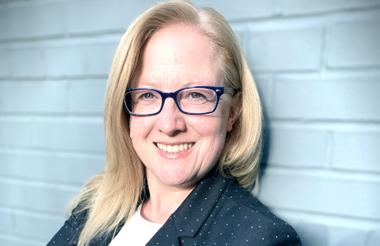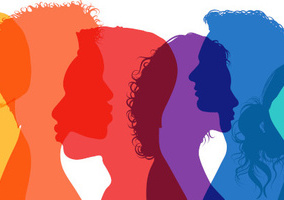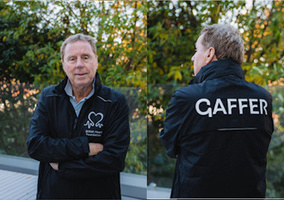British Heart Foundation (BHF) released its first equality, diversity and inclusion (EDI) strategy today called Igniting Change.
The strategy sets out seven objectives the charity aims to achieve to create a more equitable organisation by 2025.
One of these is to continuously monitor cardiovascular inequalities. In the strategy, BHF outlines that heart diseases do not affect people equally. Rather, cardiovascular health is impacted by factors like socioeconomic background.
Civil Society News spoke to the health charity’s CEO, Charmaine Griffiths, about why it launched the strategy.
She said: “This document is the start – it marks a moment in our journey at BHF. We’ve been tackling inequalities for sixty years and more, but this brings all aspects of BHF together in one vision for EDI.”
Griffiths said: “It’s clearly the right thing for us to do. I think as a leading health organisation and major investor in UK research generally, it felt like the right time to put our cards on the table and be a force for good in tackling equity in everything we do.”
According to a YouGov survey, BHF is the fifth most popular charity in the UK. Its total income for the financial year ending March 2021 was over £225m.
Griffiths outlined that the charity’s EDI strategy will be delivered throughout the organisation. This extends from the charity’s colleagues and volunteers, to its patients and research community.
The best teams are the ones that are the most diverse, she said.
“We want a longer, better life for everybody regardless of their background,” Griffiths explained.
Increasing diversity at BHF
Another objective of the EDI strategy is creating fair progression opportunities for all colleagues at BHF, no matter their background.
BHF’s recent staff engagement survey found 77% of respondents agreed that the charity has created an environment where people from diverse backgrounds can succeed. It wants this to rise to 90% by 2025.
Griffiths told Civil Society News: “The strategy we’ve published this week commits us to increasing the diversity of our colleagues, volunteers, trustees, committee members and supporting a more representative research community as well.
“So, it really extends over every aspect of what we do. We know we have the most impact and can be the best force for good in the world when we are fully representative of the communities we serve. We know we’ve got change that’s required to achieve that.”
The CEO said there are some areas in particular where BHF wants to see more diversity, which include its senior leadership group, volunteers and trustees.
BHF has begun improving recruitment processes by using software to check its job adverts for language bias. Griffiths said the charity is also challenging educational requirements for roles unless they are absolutely necessary, and agrees with the #NonGraduatesWelcome initiative.
Members of the BHF team have also undergone unconscious bias and EDI training.
‘We’ve got work to do’
Griffiths said that the BHF’s research community is not as representative and as equitable as she would like it to be.
“Things like clinical trials aren’t always representative of people who ultimately receive treatments developed through them – for women, for example, and minority ethnic groups are significantly underrepresented in clinical trials.”
“We’ve got work to do in the research we invest in and the choices we make – not just for encouraging diversity in our community but making sure the research we directly fund is also making the best possible impact for people.”
Learning from others on EDI
BHF is “deeply committed” to being transparent in the process of achieving an equitable organisation, Griffiths said.
“We recognise that we are learning from others all the time, we’re learning from our own BHF family as well as watching other organisations and this is going to take all of us, not just across the BHF but across society.
“But we are impatient for change. So, by launching this strategy we are going to be holding ourselves to account both internally and externally.”
Griffiths mentioned that the BHF has also listened to its patient community for feedback on how it can become a more equal charity.
The BHF is a member of Equality, Diversity and Inclusion in Science and Health (EDIS) and said it learns a lot from its partners in that group.
‘Borne of countless voices’
“Seeing people come together and identify what matters most and where they think the BHF can change, or should be better, has been absolutely inspirational to see – it’s just been fantastic. So this strategy truly is borne of countless voices that have come together that will create something that will ignite change within the BHF and I’d hope in the world way beyond us as well.”
She would encourage other civil society organisations to also launch an EDI strategy.
“We’ve grown and changed even in the process of creating the strategy.”
Challenges of creating the strategy
While the process of creating the EDI strategy was “largely a positive one”, there were challenges, as there were with the creation of any strategy, Griffiths said.
These centered around ensuring the goals in BHF’s strategy were clear and articulated well while also bringing thousands of voices to a consensus.
“I’m incredibly proud of it,” Griffiths said.
Every senior leader in BHF this year has an objective to deliver against the new EDI strategy, and it will become part of the way the charity assesses performance as well, Griffiths said.
BHF will be reporting on the progress of its goals in its annual report.
“I know it’ll make us a better team and it will help us deliver better on our mission as well.”
Related articles












